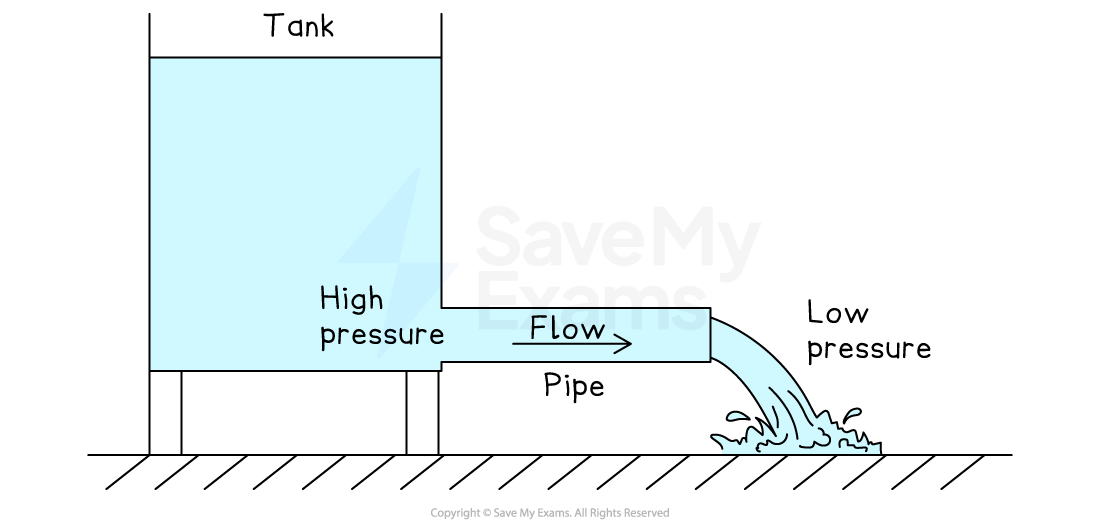Fluid Flow Rates (College Board AP® Physics 1: Algebra-Based): Study Guide
Fluid flow rates
Pressure difference
A pressure difference is required for a fluid to flow
Consider a large tank of water with an outlet pipe at the bottom, the water flows out of it because:
the end of the pipe attached to the tank experiences a higher gauge pressure due to the large height of water
the end of the pipe open to the air experiences atmospheric pressure only
If pressure was equal on each end, no net force would be exerted on the water, and it would not flow
One example of this pressure difference is a pipe releasing water from a large tank
The end of the pipe at the bottom of the tank experiences a large gauge pressure
The end of the pipe open to the air only experiences atmospheric pressure
The pressure difference causes fluid to flow
Pressure difference causing fluid flow

Conservation of mass
The fluid in an open-ended tube is incompressible and flows steadily
This means the total mass of fluid in the pipe at any one time is constant
Mass is conserved, so the rate at which mass passes any point is constant
If 15 kg of fluid enters the pipe in 2 s, 15 kg must exit the pipe in the same 2 s
Density is constant, so this means the rate at which volume passes a given point is also constant
Conservation of mass flow rate

Derived equation
The rate at which matter flows past a point is proportional to the cross-sectional area of the flow and the speed at which the fluid flows
This is known as the volume flow rate equation:
Where:
= volume of fluid passing a point, measured in
= time taken for the volume to pass the point, measured in
= cross-sectional area of the flow at that point, measured in
= speed of the flow at that point, measured in
Fluid passing a point in a pipe

Derivation
Step 1: Identify the fundamental principles
The volume of fluid passing a given point X per unit time is constant
This is due to the conservation of mass
Fluid in a steady flow is always traveling at the same speed when passing a given point
Step 2: Apply the specific conditions
Using the above diagram, the fluid has a cross-sectional area
at point X
A column of fluid of volume
passes point X
This column has a length
It takes time
for the column to pass point X
The length of the column can be written in terms of its speed and time:
The volume of the column of fluid can be written in terms of its cross-sectional area and length:
Step 3: Combine the specific conditions
Substituting the expression for the column's length gives:
Rearranging this gives the expression for the rate of flow of volume past a point:
As a result of the conservation of mass,
has the same value for any point along a given fluid flow

Unlock more, it's free!
Did this page help you?